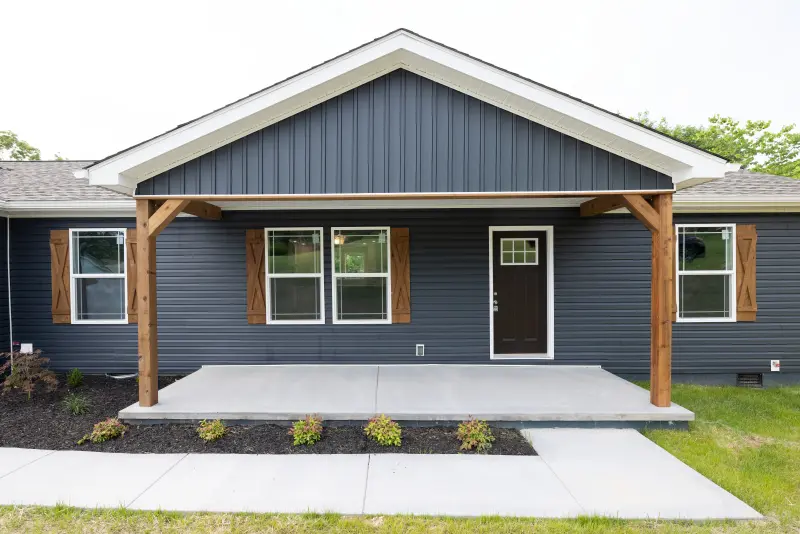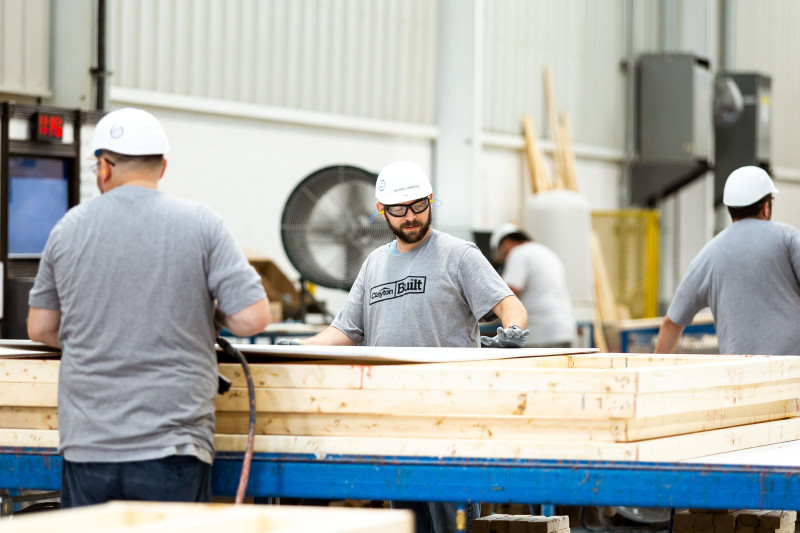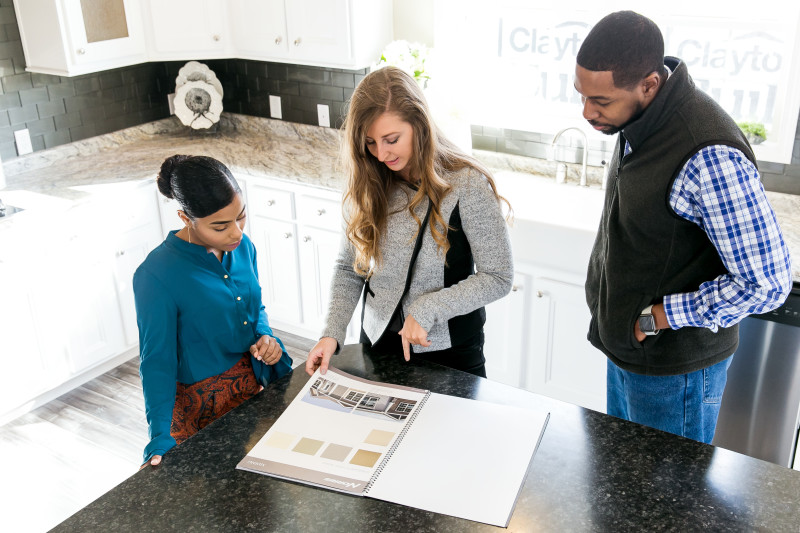Modular Or Manufactured? Which is Right for You

Trying to decide between a manufactured home and modular home? We’re looking at some of the differences between the two and a few questions that can help you figure out the right one for you.
If you’re ready to become a homeowner, a manufactured or modular home is an affordable, quality choice for you and your family. Both are types of prefabricated homes that offer a lot of options when it comes to price, features and style.
Below, I’ll go over more about each type and what you should know if you’re trying to decide between the two.
What are Manufactured and Modular Homes?
When I say manufactured and modular homes are both kinds of prefabricated homes, that means they’re built inside a facility and then moved to the home site. Once the home is placed on the land, the final construction details take place, like connecting appliances or adding a garage. This is compared to a traditional site-built home, which is built completely at the home site.
And while some people use manufactured and modular interchangeably, the main difference between the two types comes down to how they’re built.

In 1976, the national HUD Code was created, separating mobile homes from the manufactured homes you see today. This means manufactured homes meet federals standards for things like energy efficiency, plumbing and electrical systems, fire safety and more. A manufactured home typically stays on the steel chassis it’s built on and is usually placed on a pier and beam foundation. In some cases, the home can also be moved to a new location.
In comparison, a modular home is built based on the state, regional and local building codes that apply to the final home location, just like a site-built home. For example, a county in Tennessee might have different zoning and construction rules than a city in California. Modular homes are also usually placed on a permanent foundation and cannot be moved.
While people may have some preconceived ideas based on older mobile homes of the past, today’s manufactured and modular homes are built to be safe, strong and beautiful. They use quality materials from well-known brands and undergo an inspection process to make sure they meet the appropriate regulations. And in many situations, they can take less time to build and be a more affordable option than most site-built homes. In my opinion, there’s no right or wrong choice! Instead, it’s all about finding the home that fits your specific needs the best. So, let’s break down some question that will help.

Manufactured vs. Modular Homes
1. Where will your home be located?
I talked about building codes earlier, but there are also a few other details to consider when it comes to your new home’s location. First, do you own or plan to purchase land, and where is that land located? If you live in a city, for example, you’ll want to check your zoning to see what types of housing the city allows. And if you’re planning on renting land from a manufactured home-specific community, you’ll want to choose a manufactured home.
You’ll also want to think about the type of land and its layout. Modular home floor plans tend to be more customizable, so that might be a better choice if your land is a certain shape or size. It’s also good to have an idea of what type of foundation you’re interested in. For example, based on the type of soil the land has and its zoning, you may be able to have a basement or crawlspace.
2. What home features do you want?
With both manufactured and modular homes, you can find a variety of styles, from farmhouse to modern to traditional. There are also plenty of features, options and upgrades to choose from, like kitchen islands, flex spaces, drywall interiors, standalone bathtubs, built-in storage and more. Many home models even offer porch or garage options.
However, because of the way they’re built, a modular home may be a better fit if you’re looking to make a lot of customizations to your floor plan. Manufactured home floor plans tend to be more standardized to allow for a more streamlined construction process, although today’s models still have plenty of ways to personalize your new space.
3. What’s your budget?
If affordability is your top priority, you may want to consider a manufactured home, as they tend to be less expensive than modular homes. Of course, the exact price will depend on things like how large the home is and what features you choose.
And because they’re built to the same codes as traditional homes, you may also find there are more financing options available to you with a modular home than with a manufactured home. We recommend having both a good idea of your budget and some potential loan options in mind to help you get started.

I know all of this can seem overwhelming! Buying a new home comes with a lot of decisions, but that’s where the experienced Clayton team can help. The best way to get an idea of what options you have is to get in touch with your local home center. There, one of our home consultants can show you homes that fit your budget and talk to you about features you might be interested in. They can also help explain details like different foundation types and what will need to be done at the home site to get it ready. You can also get started by checking out available manufactured and modular home models on our website and browse by different filters.
Meet with a local home consultant and tour available models.
Are you ready to find your dream home?
Start shopping now or find a home center in your area to learn more about Clayton Built® home options.By entering your email address, you agree to receive marketing emails from Clayton. Unsubscribe anytime.
© 1998-2025 Clayton.




